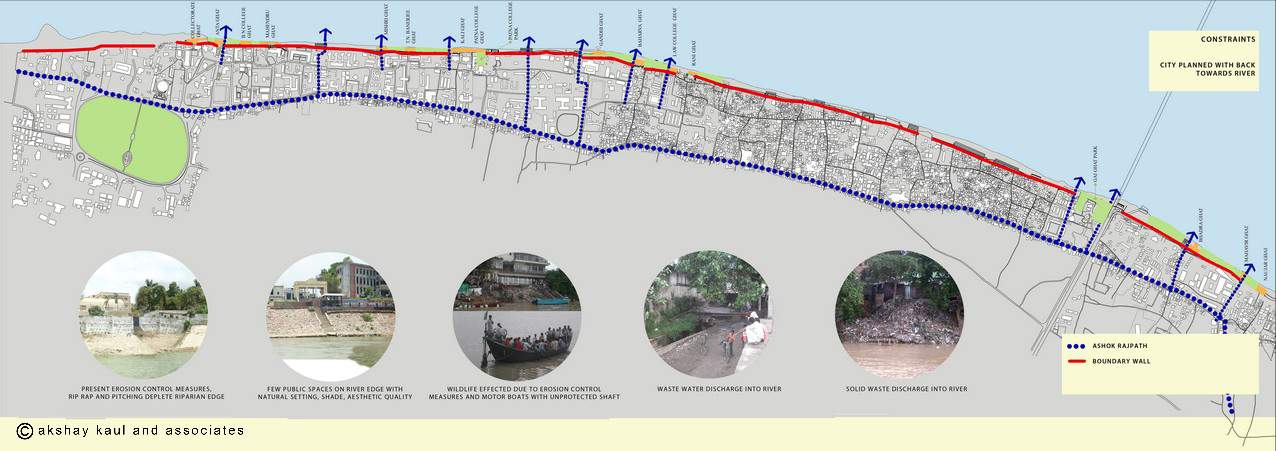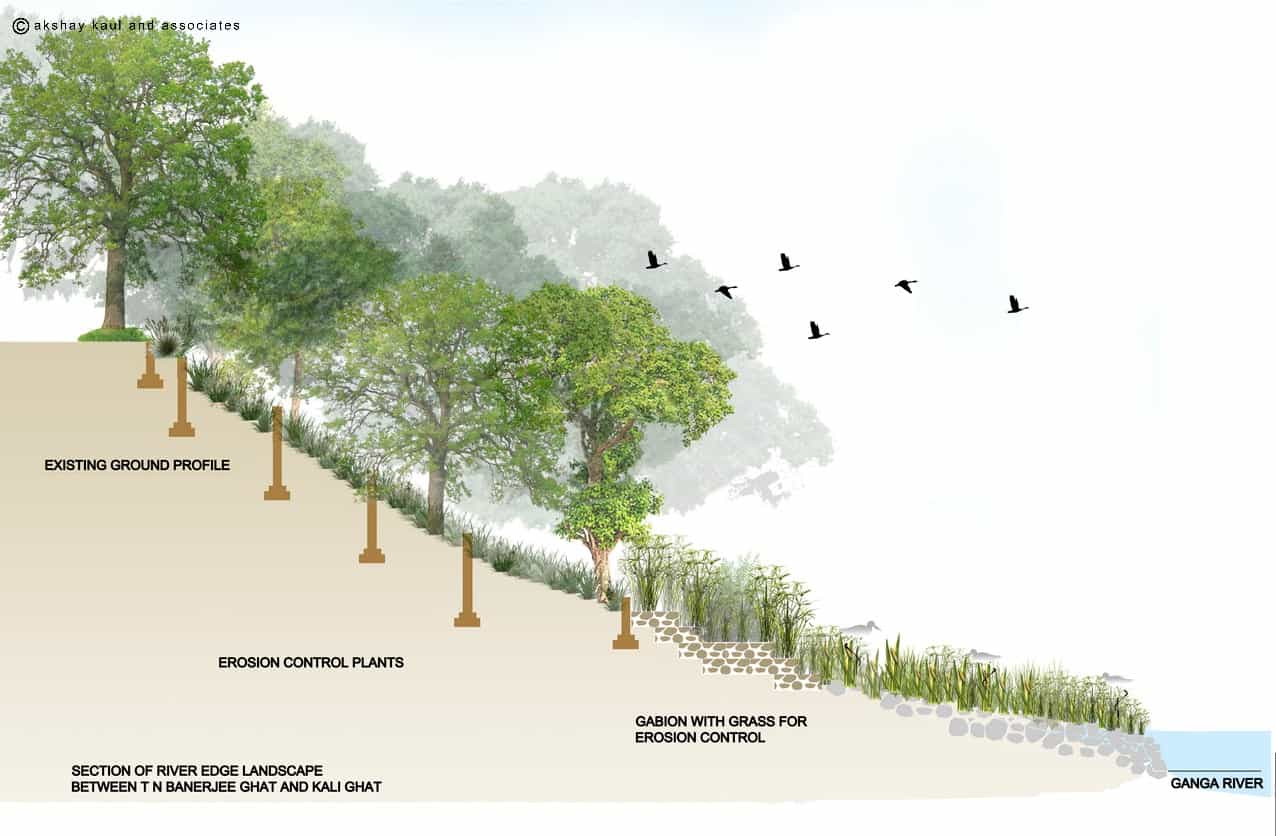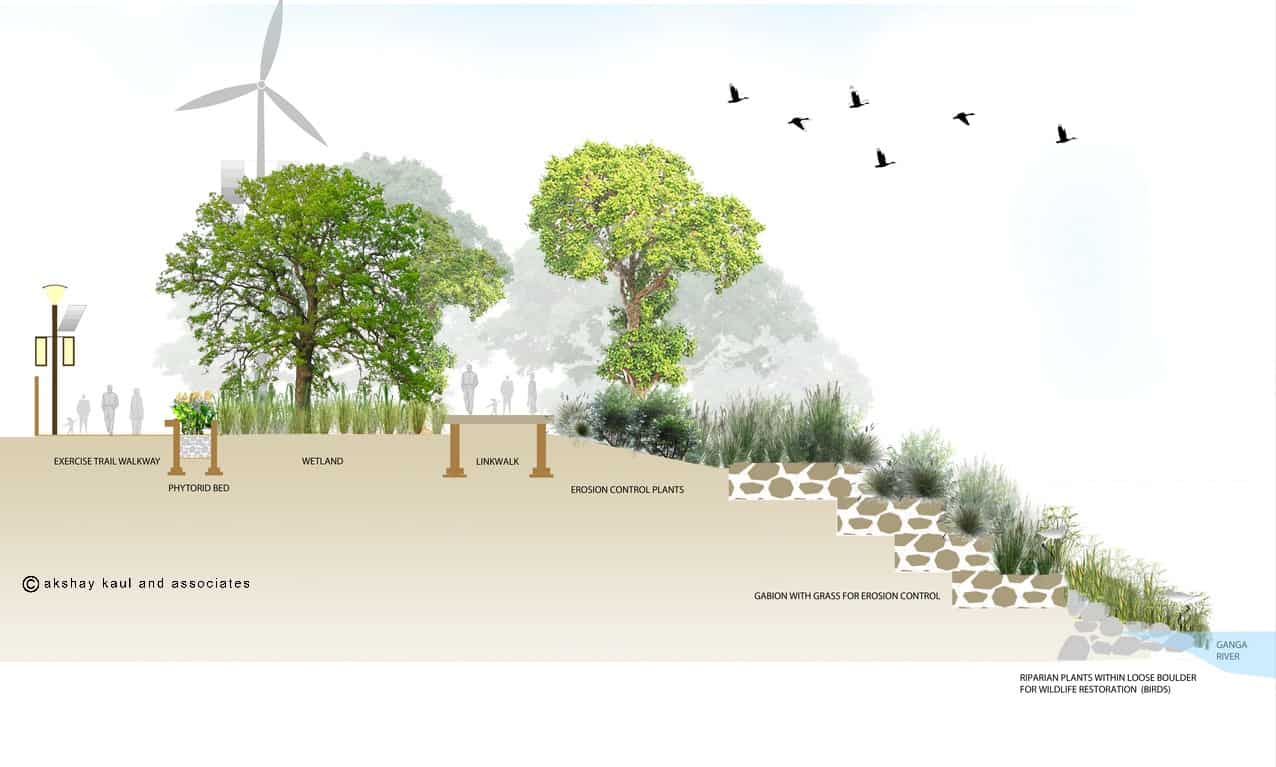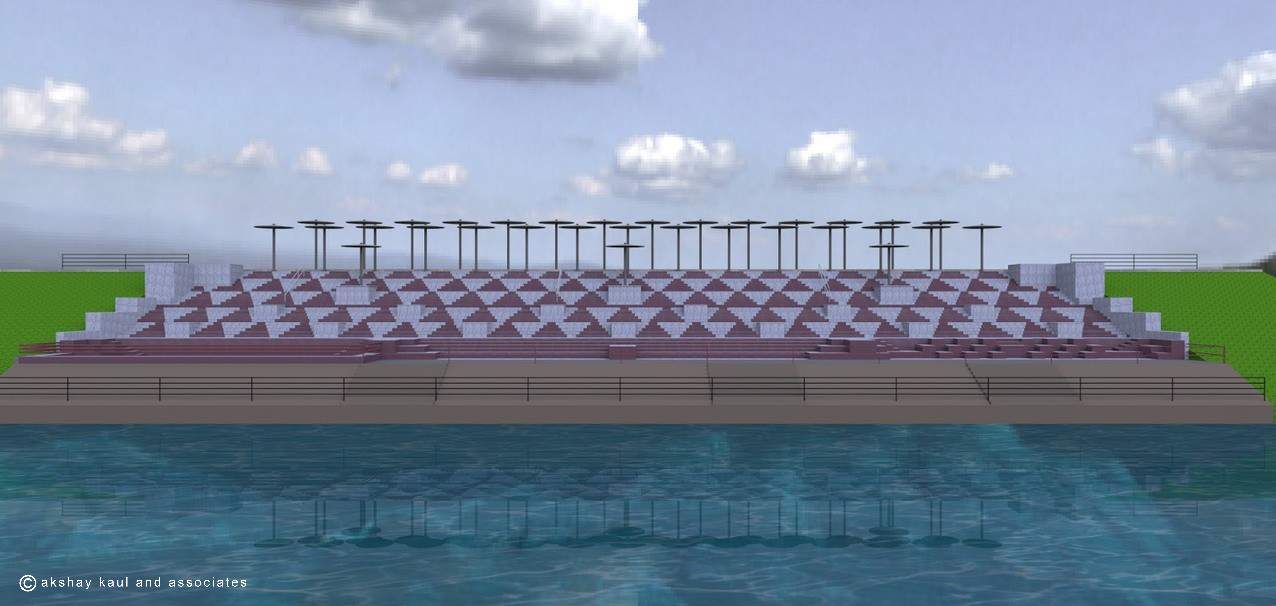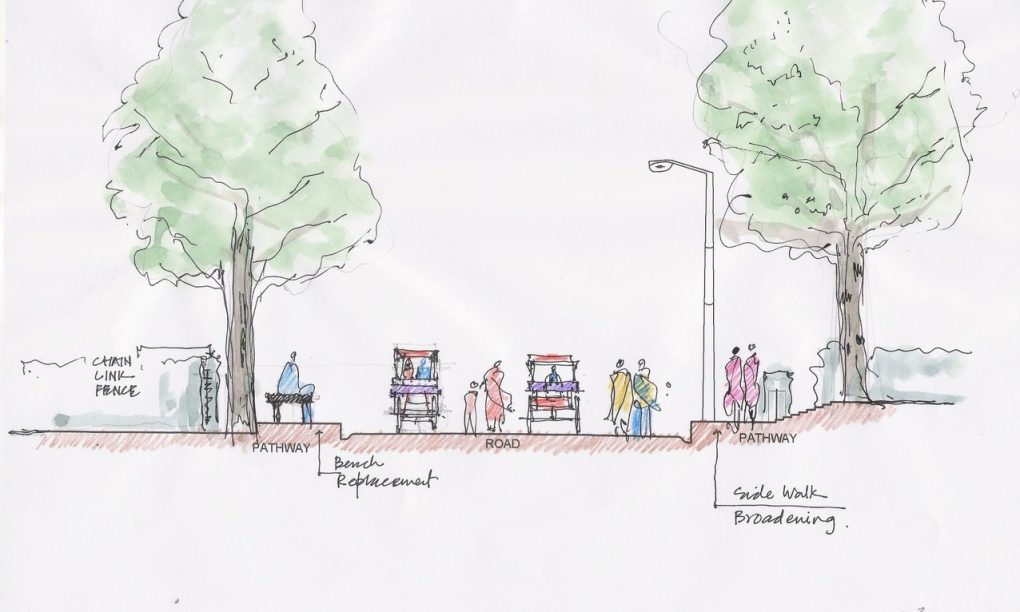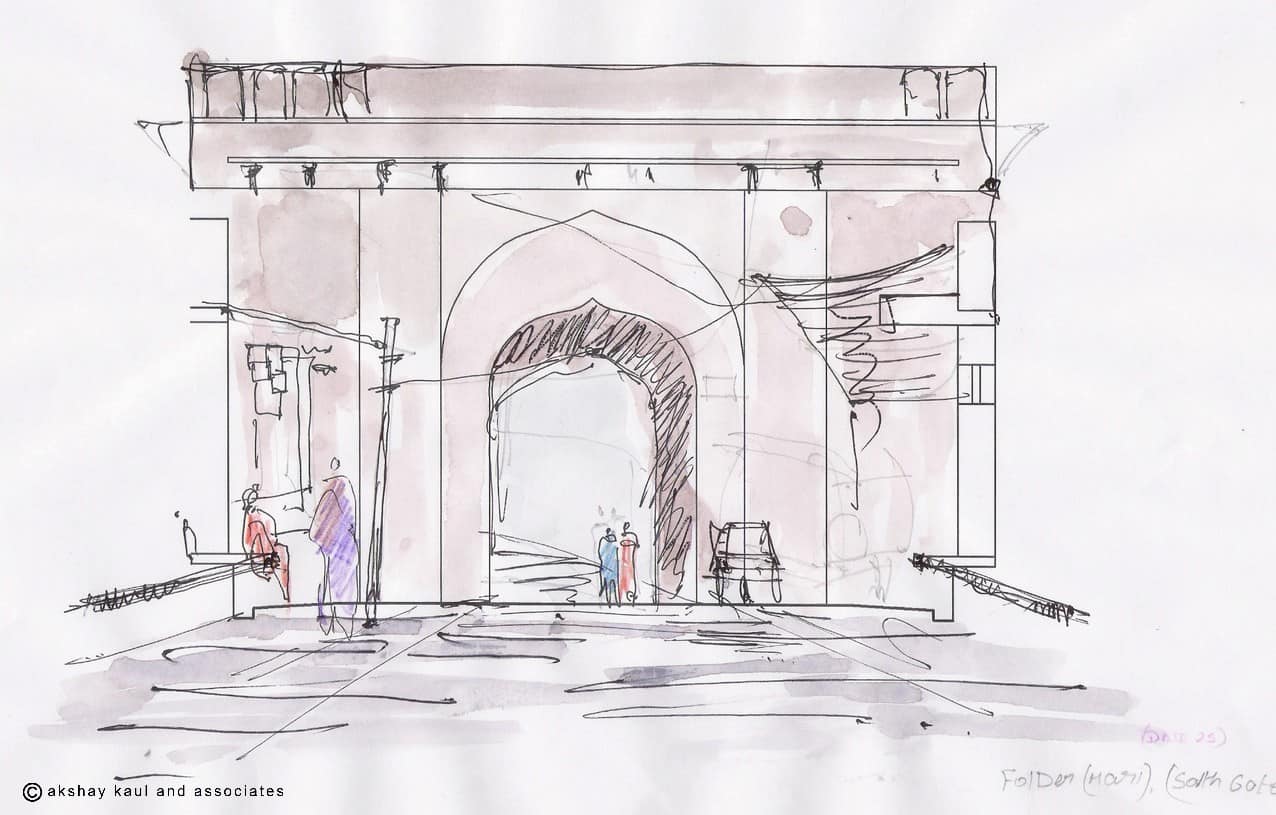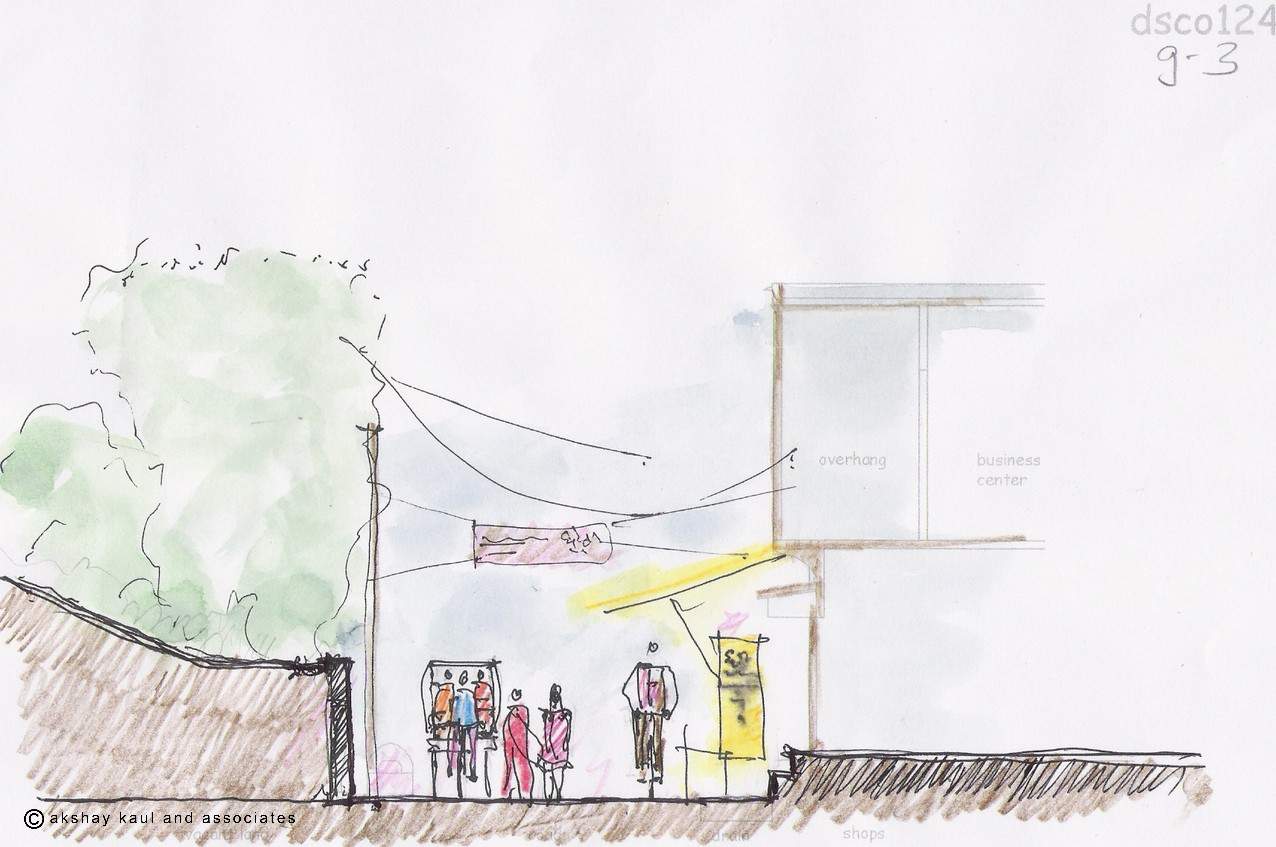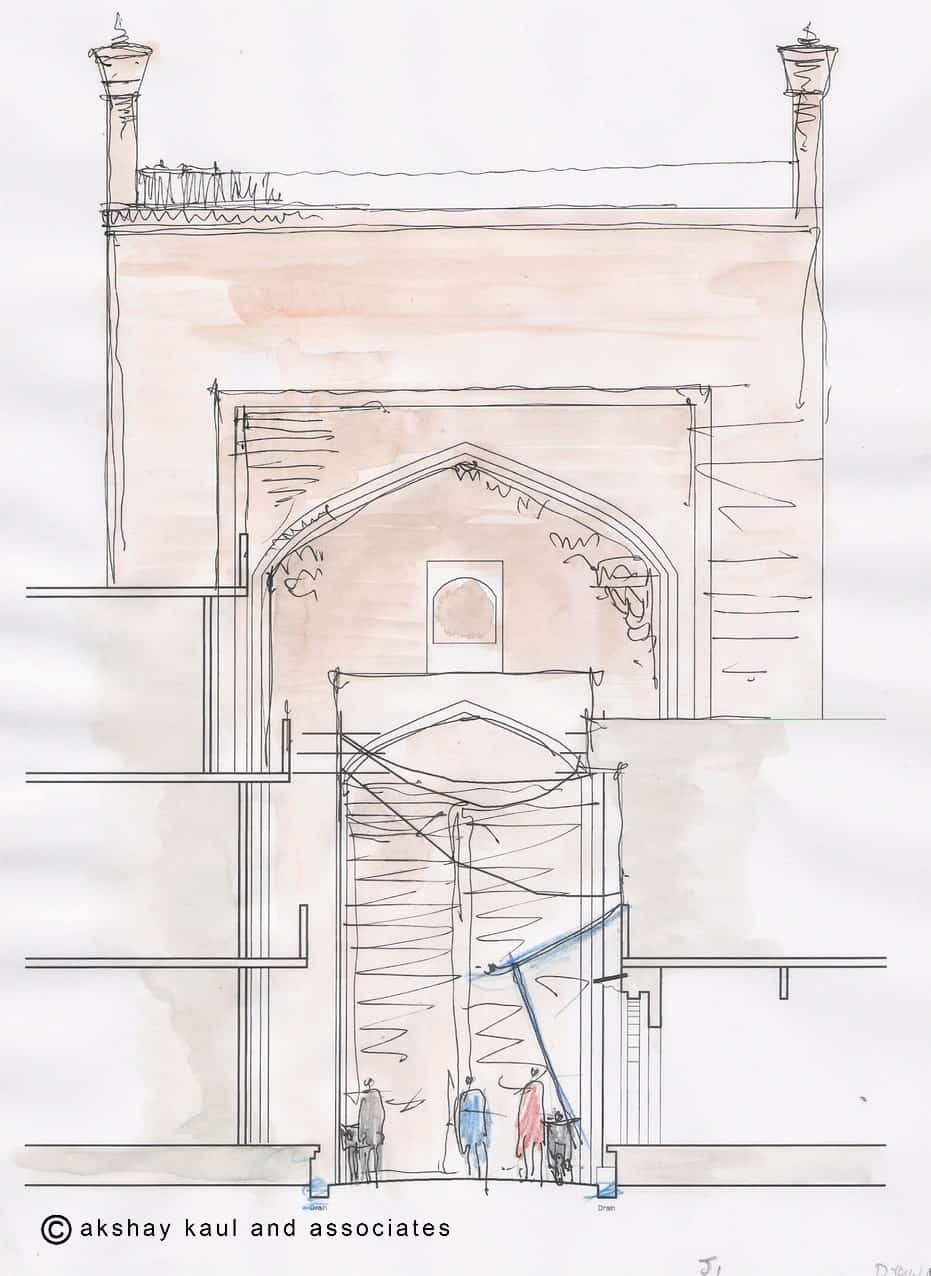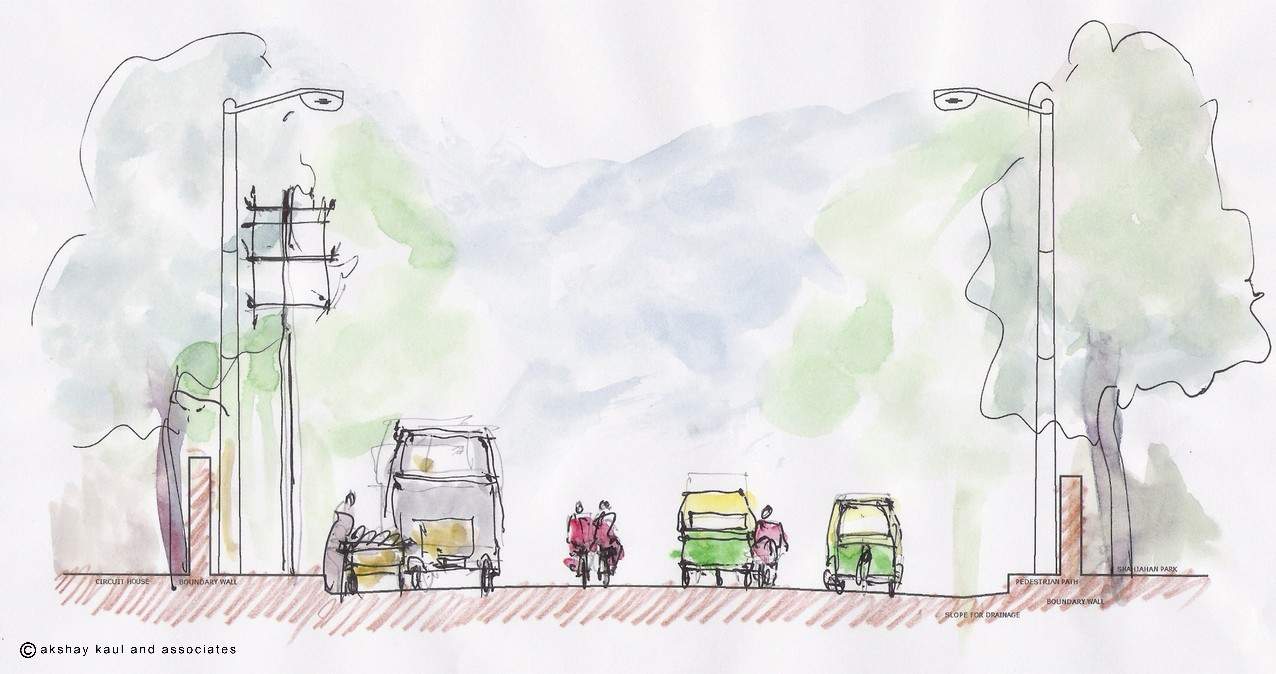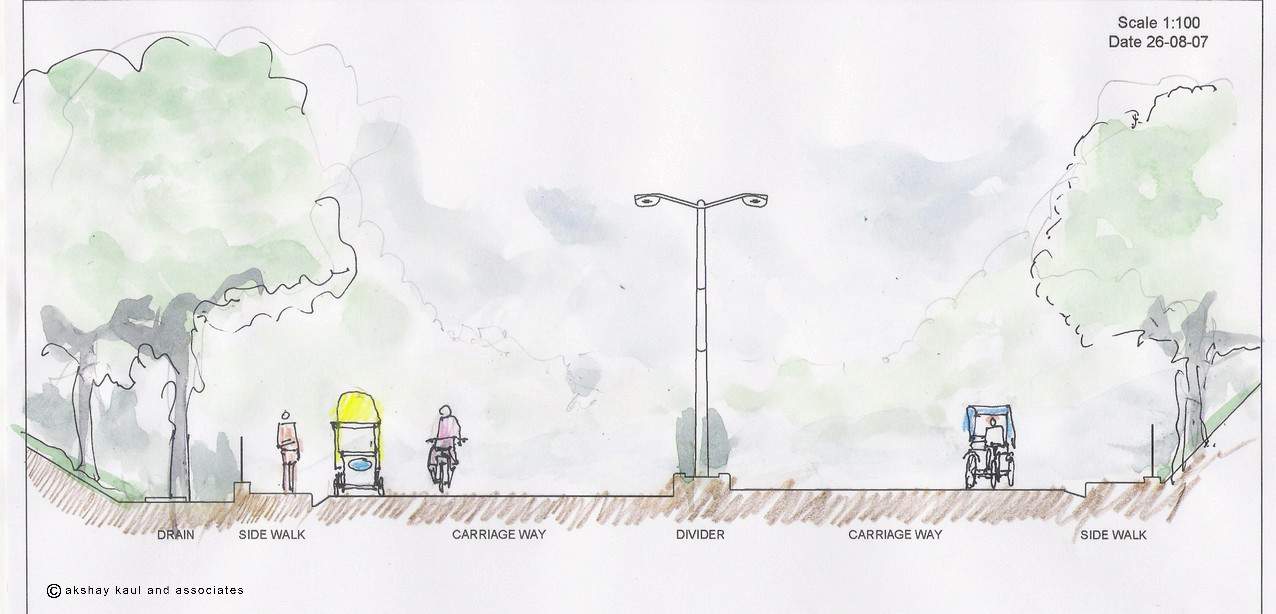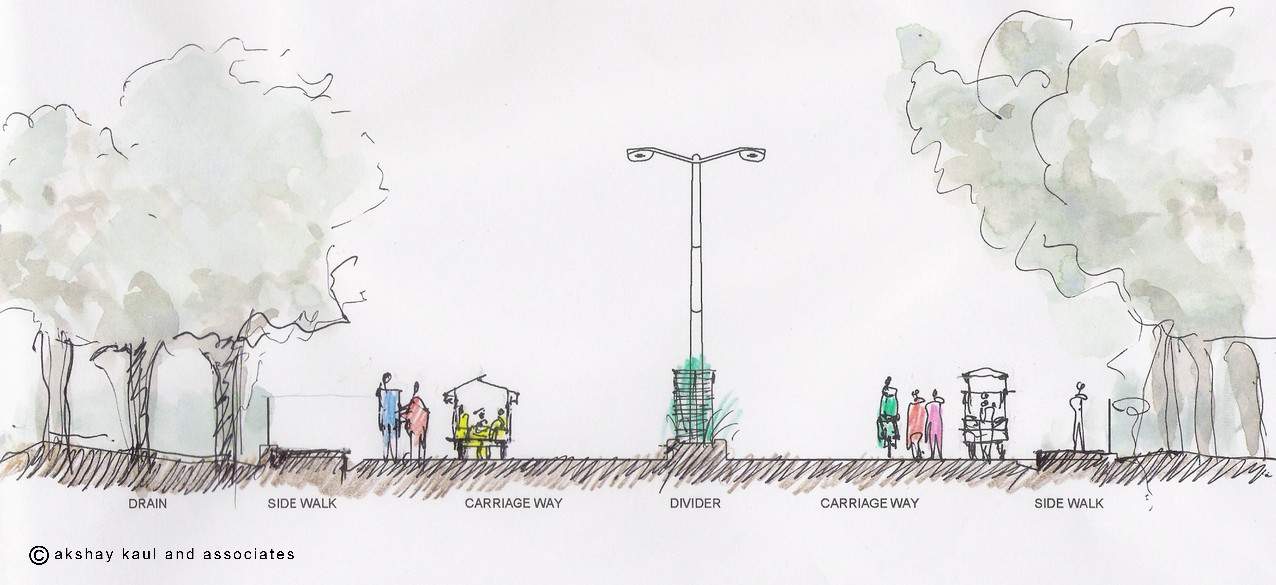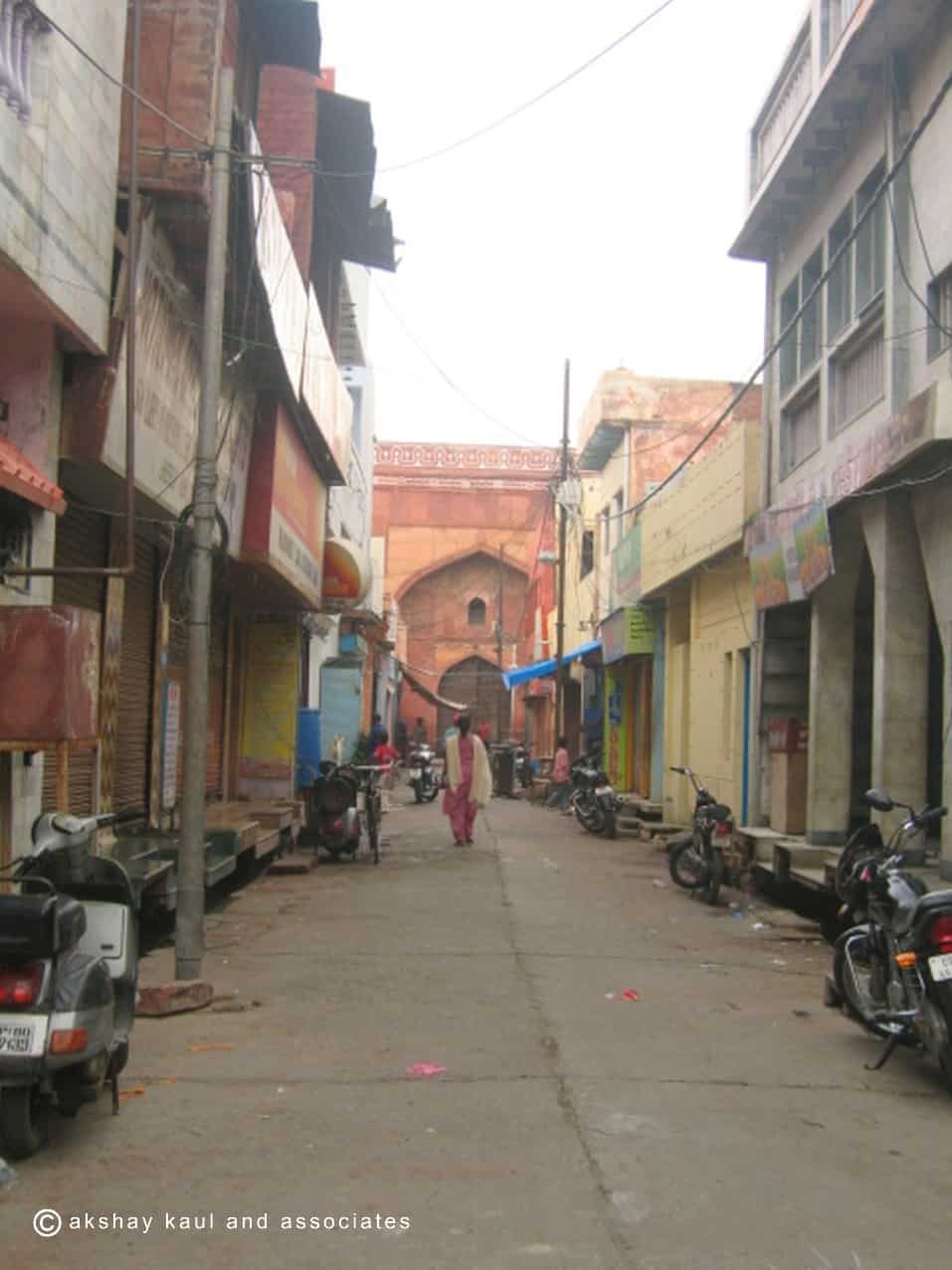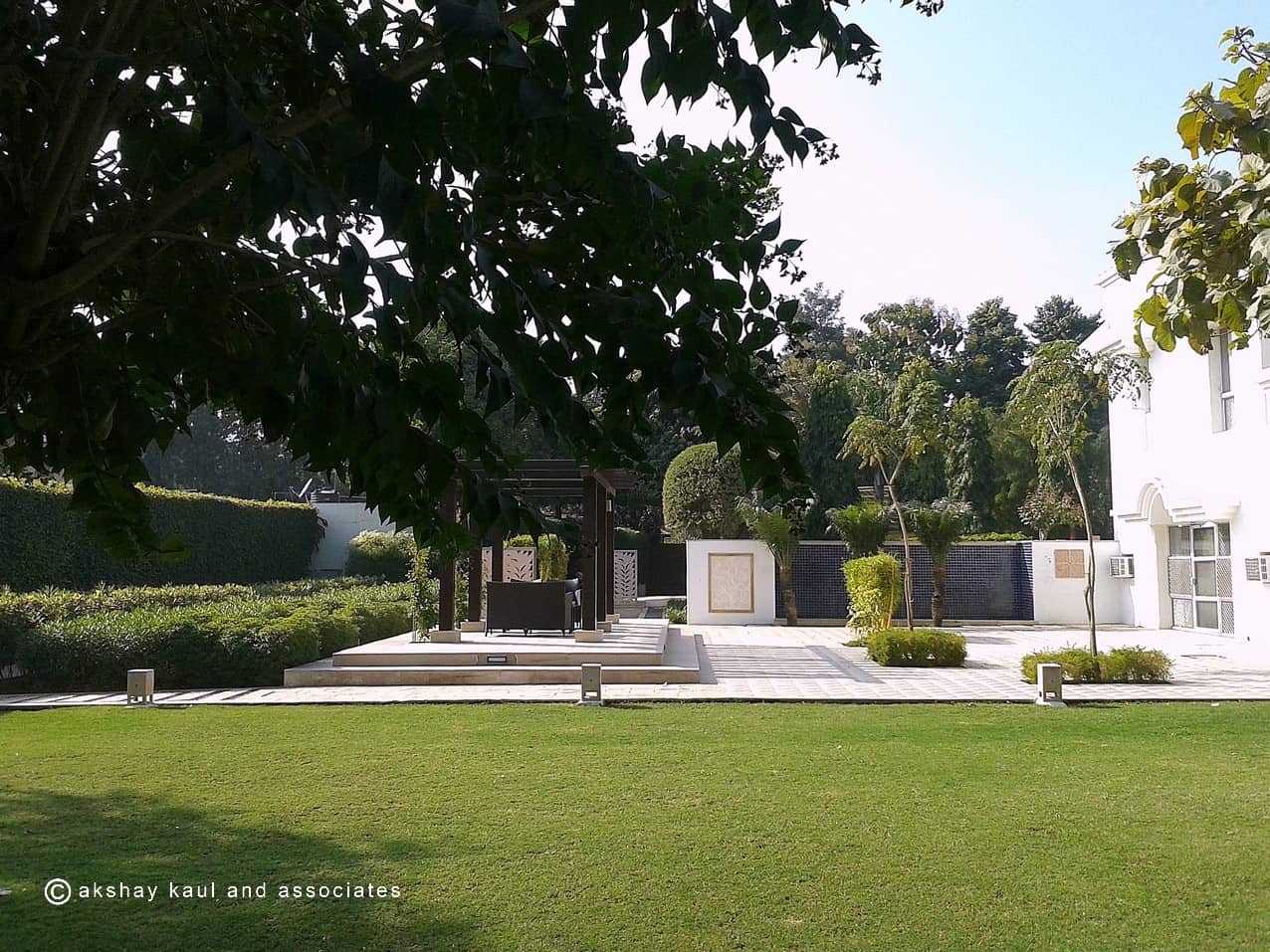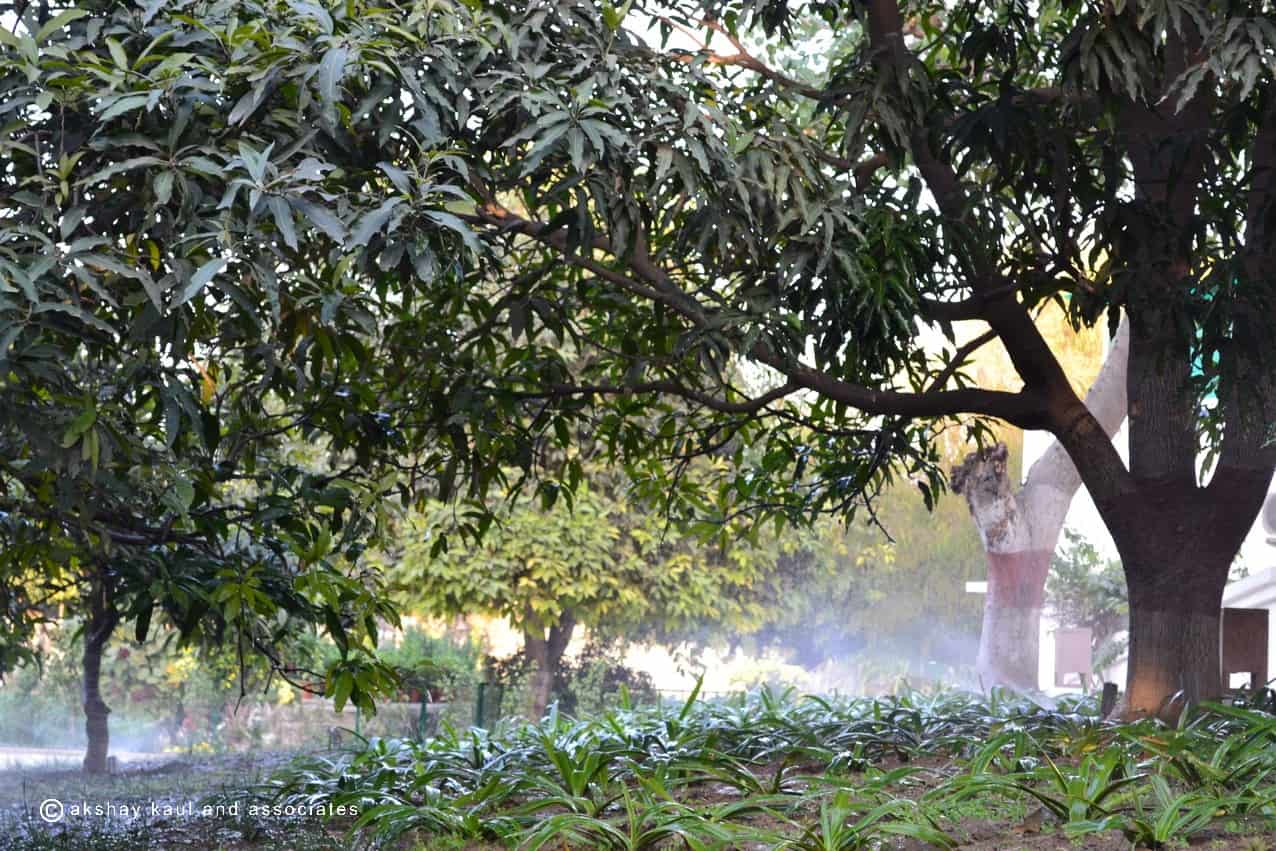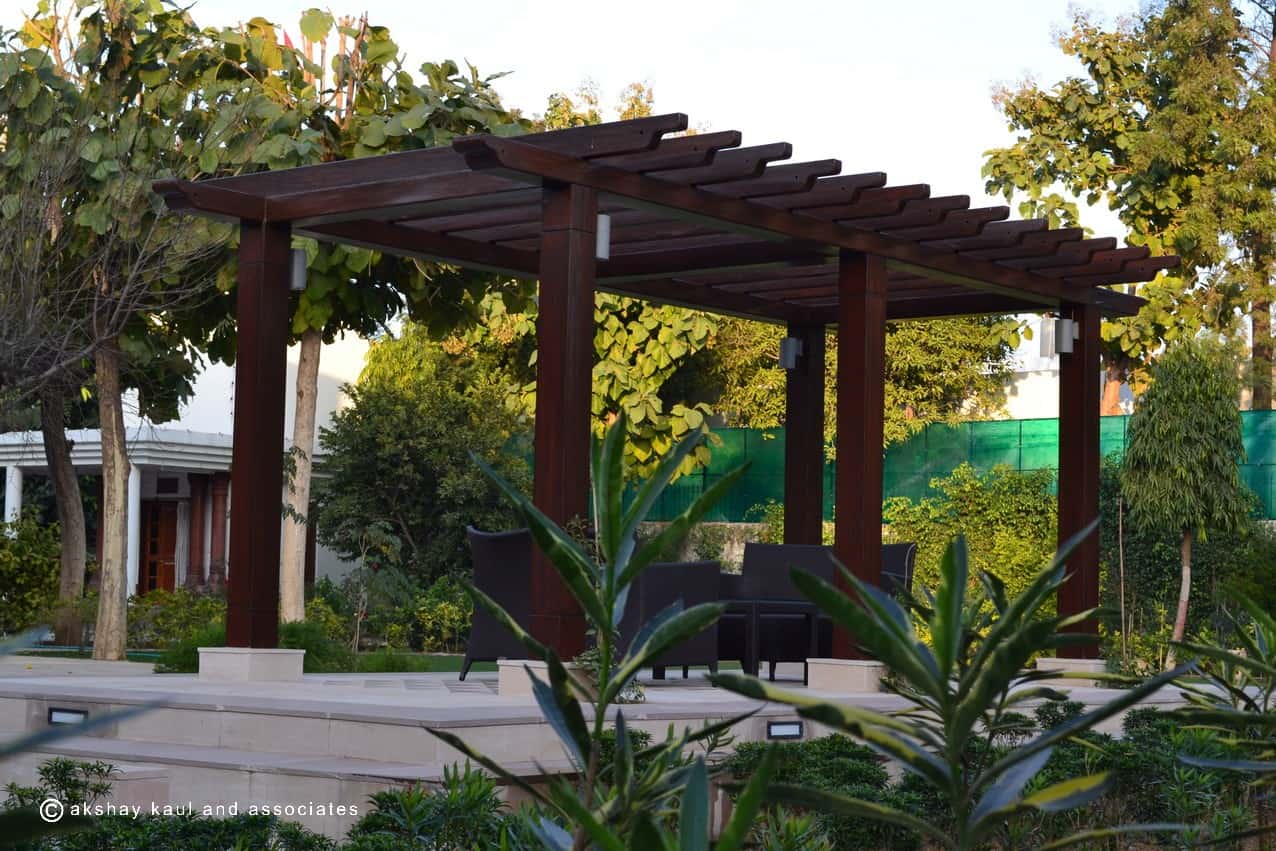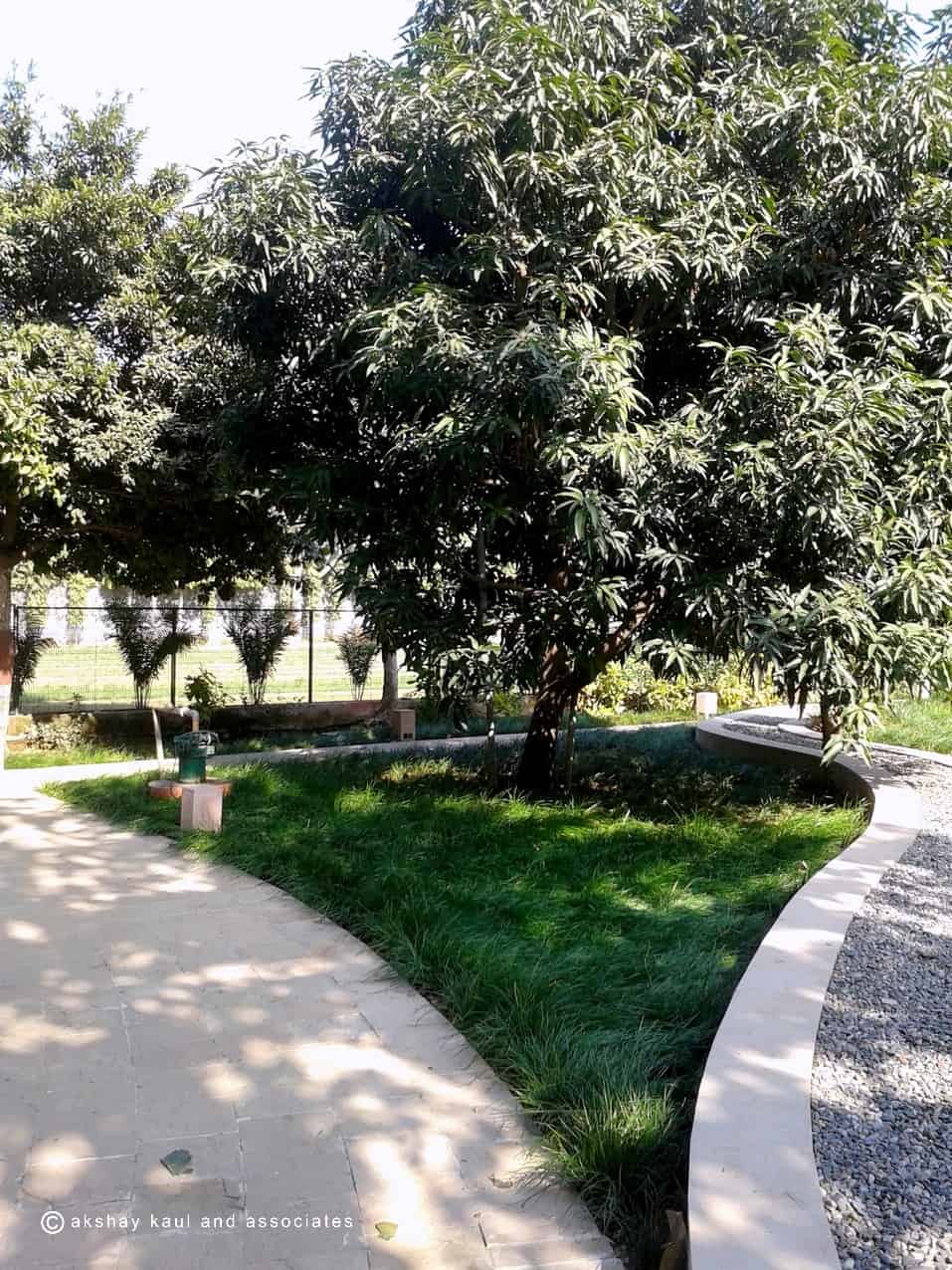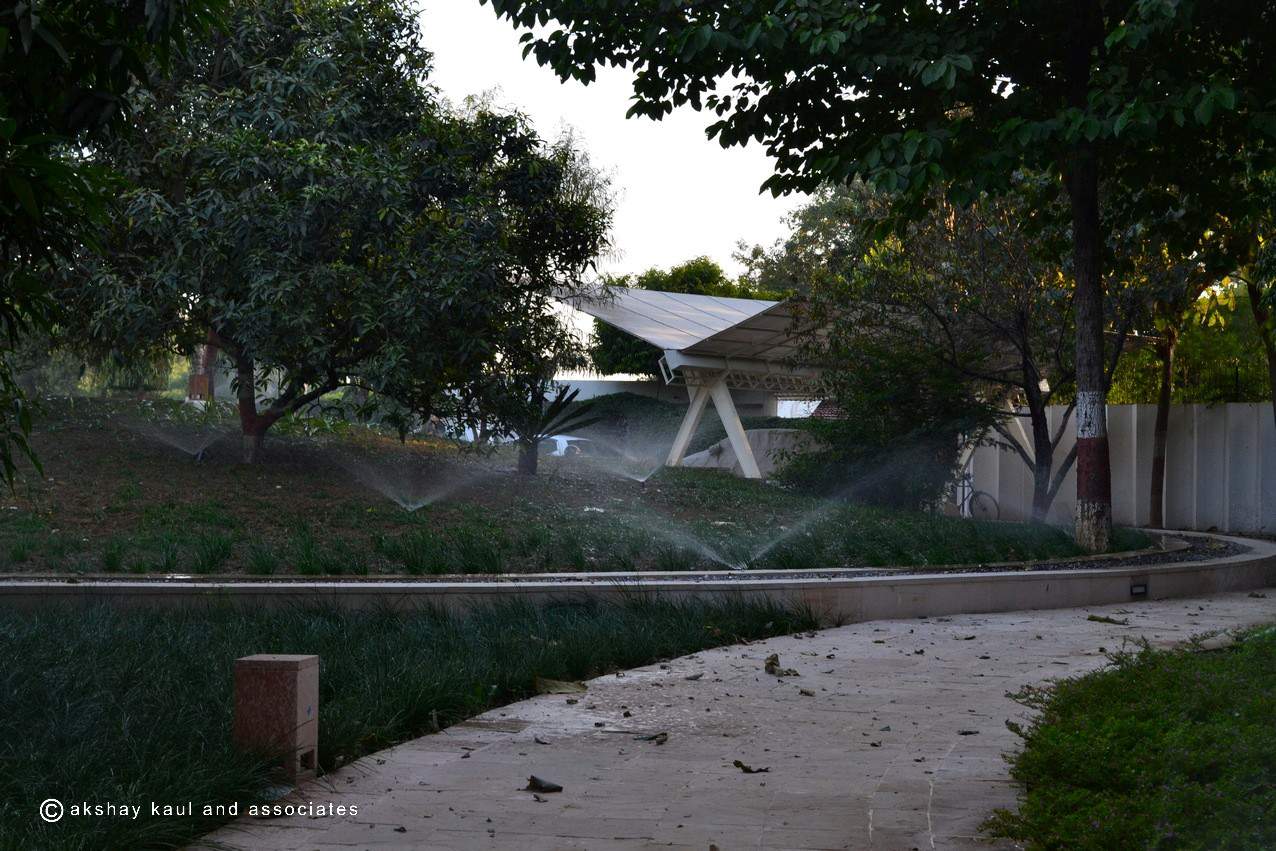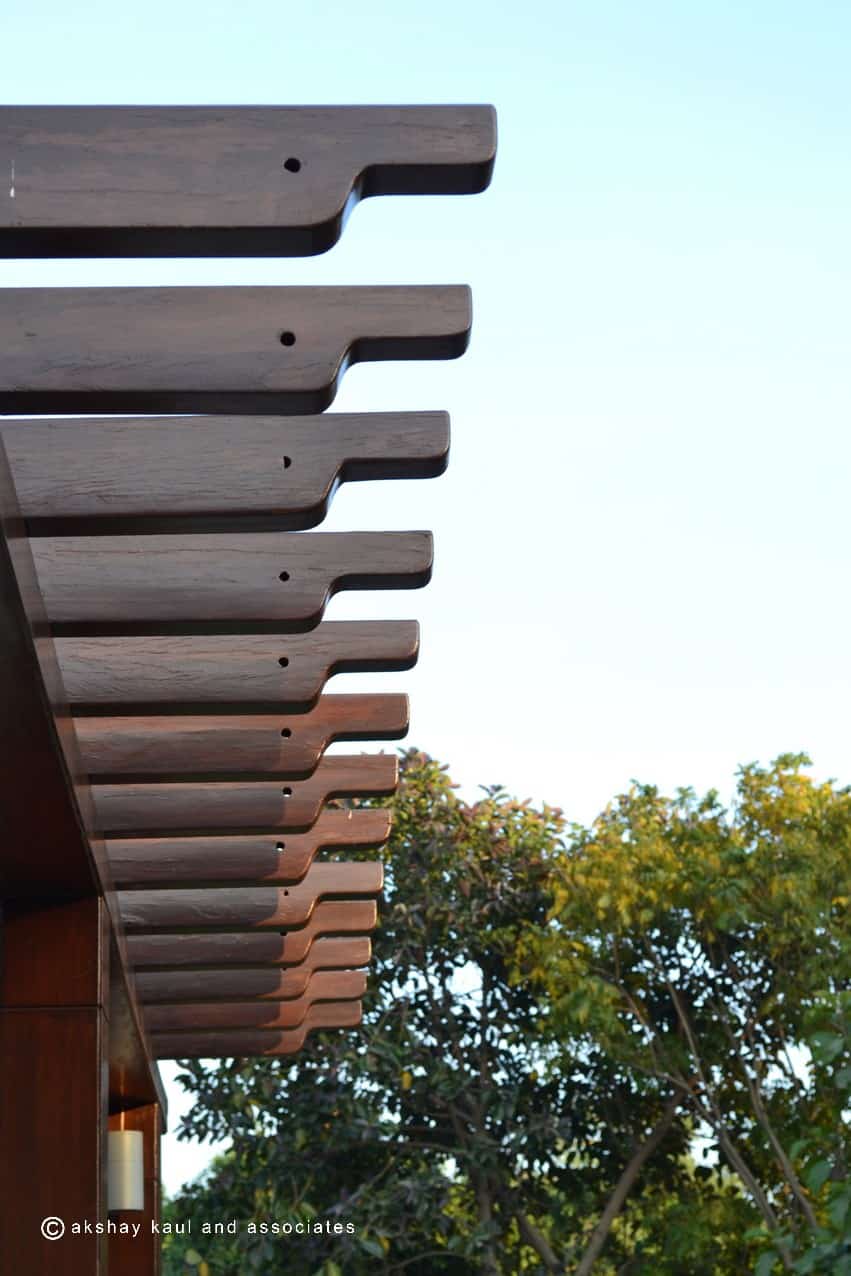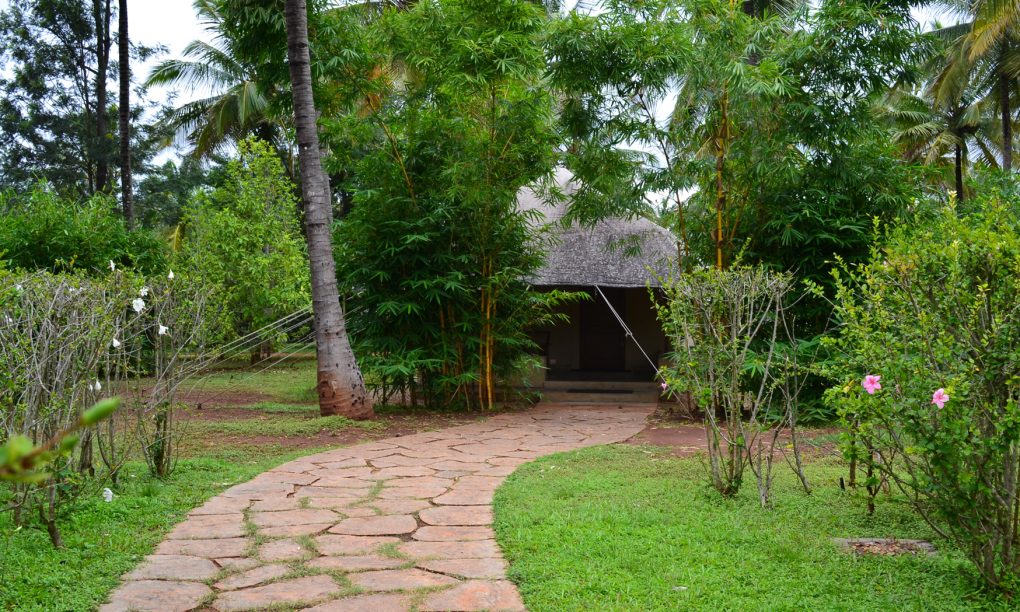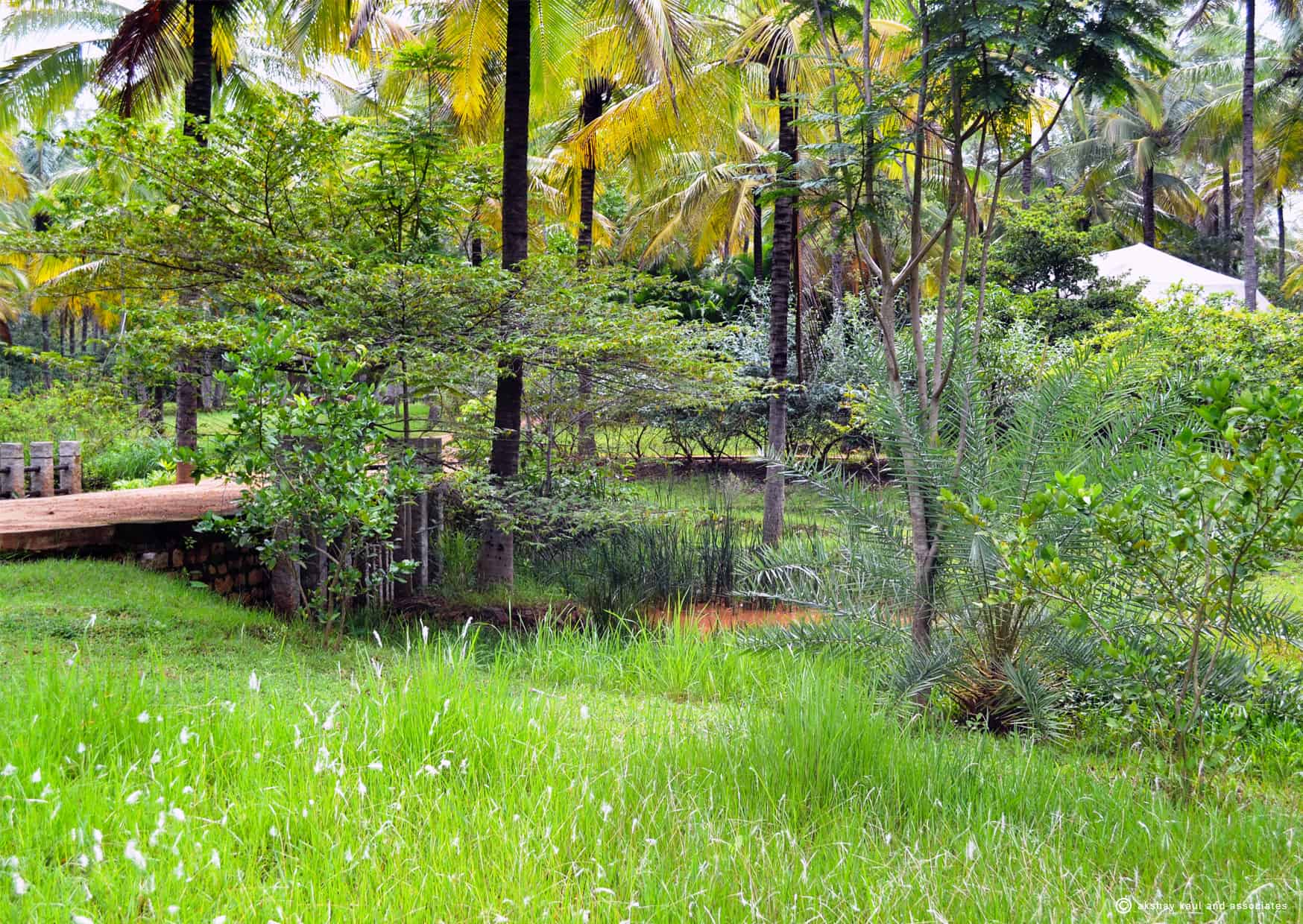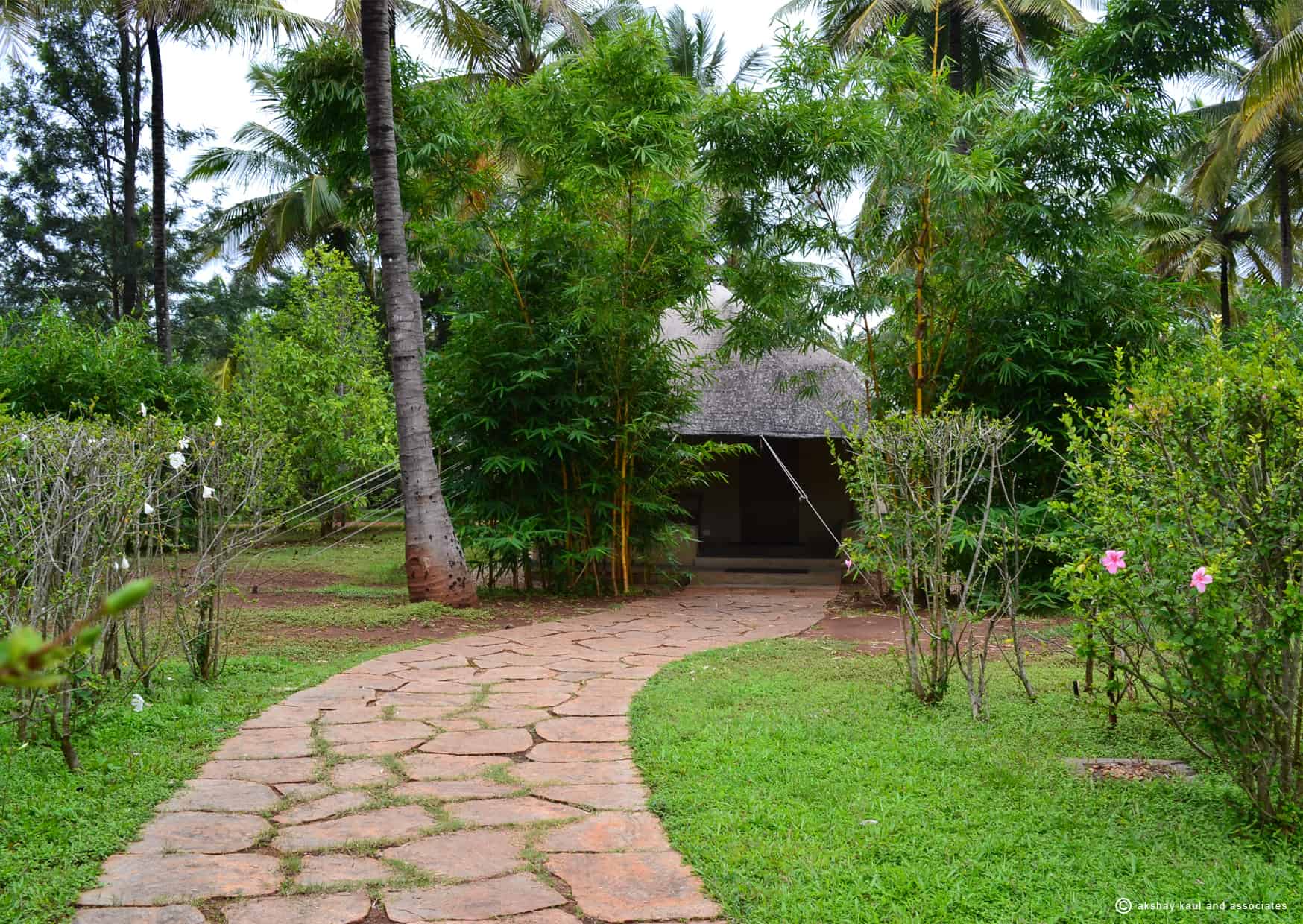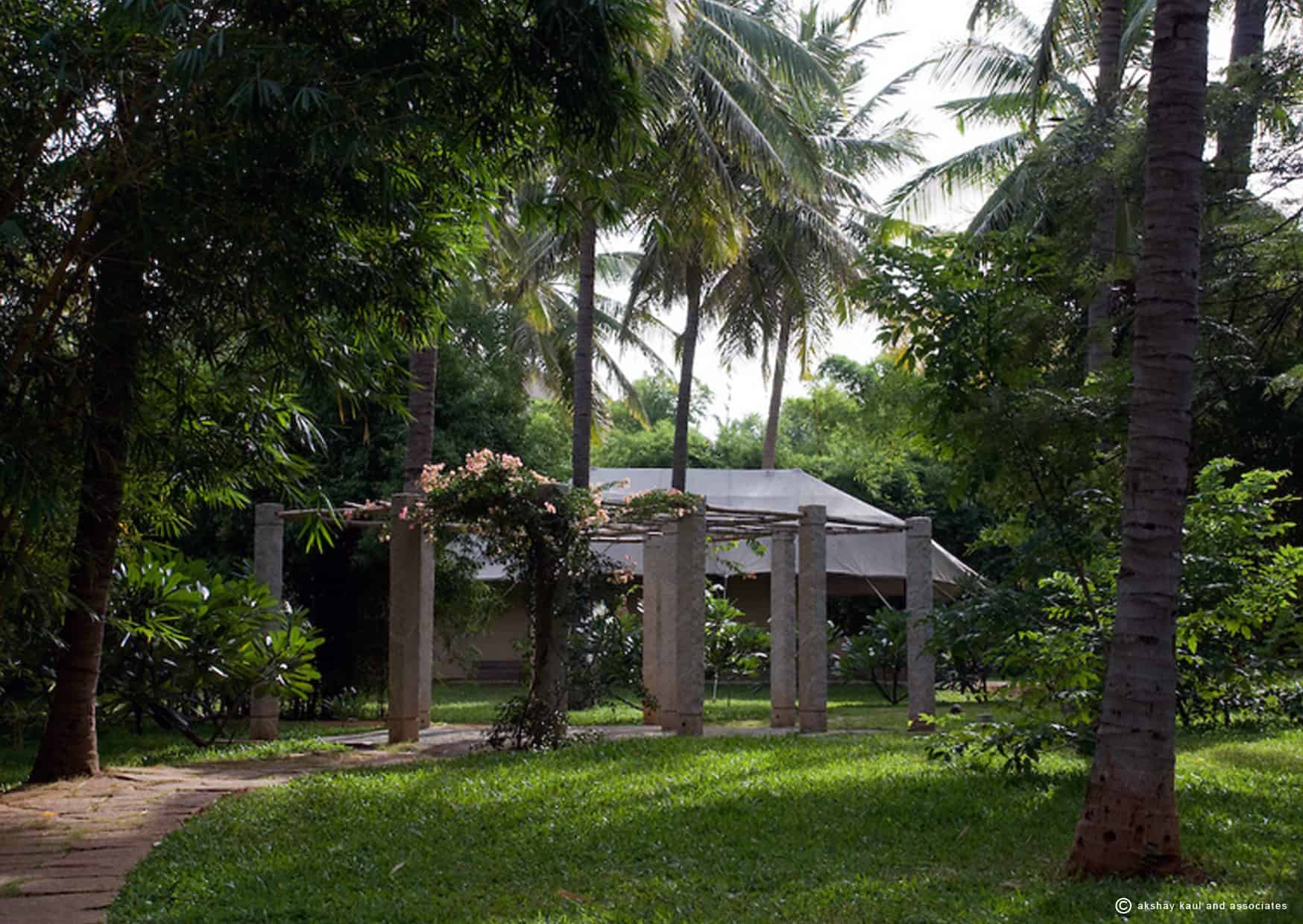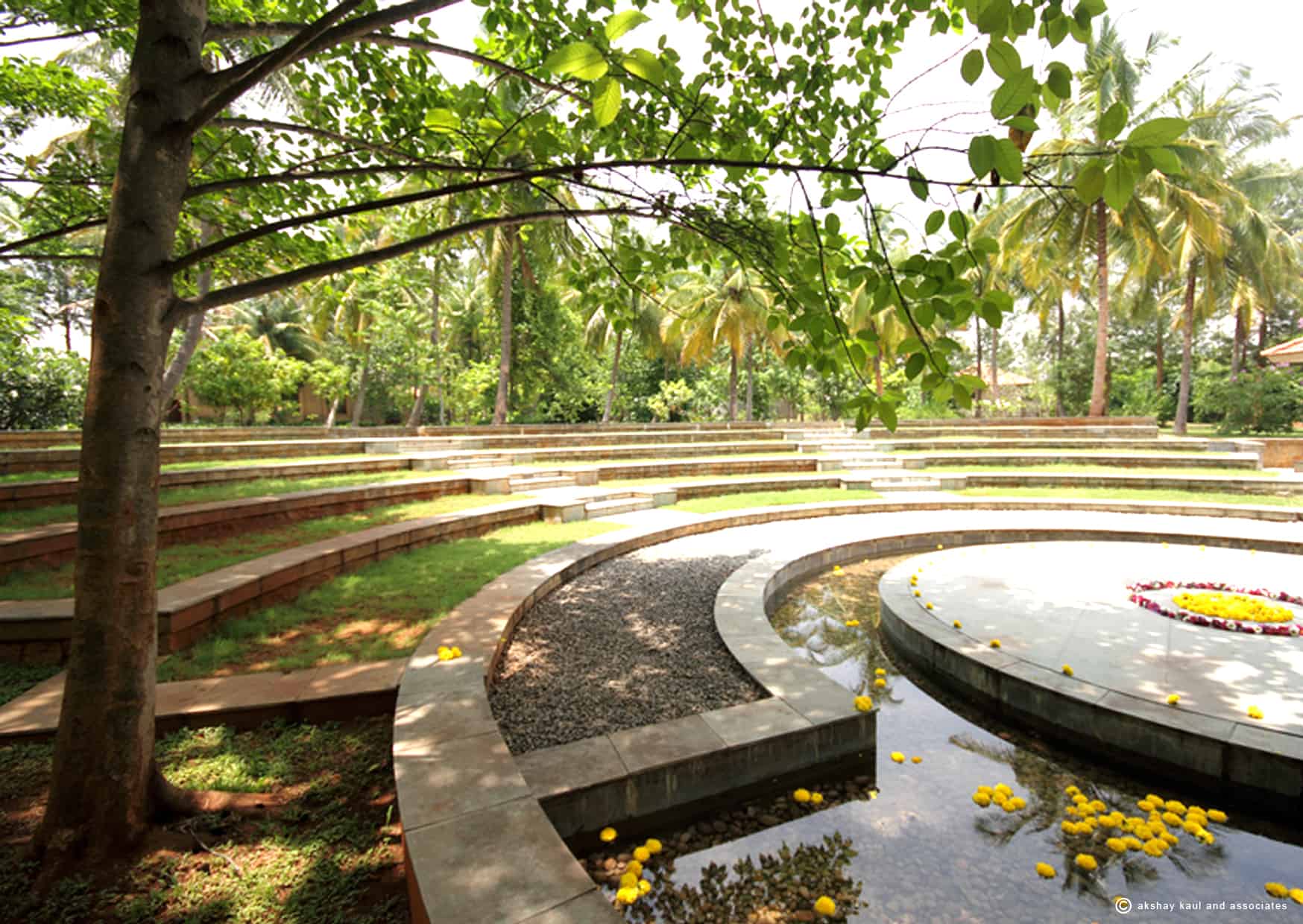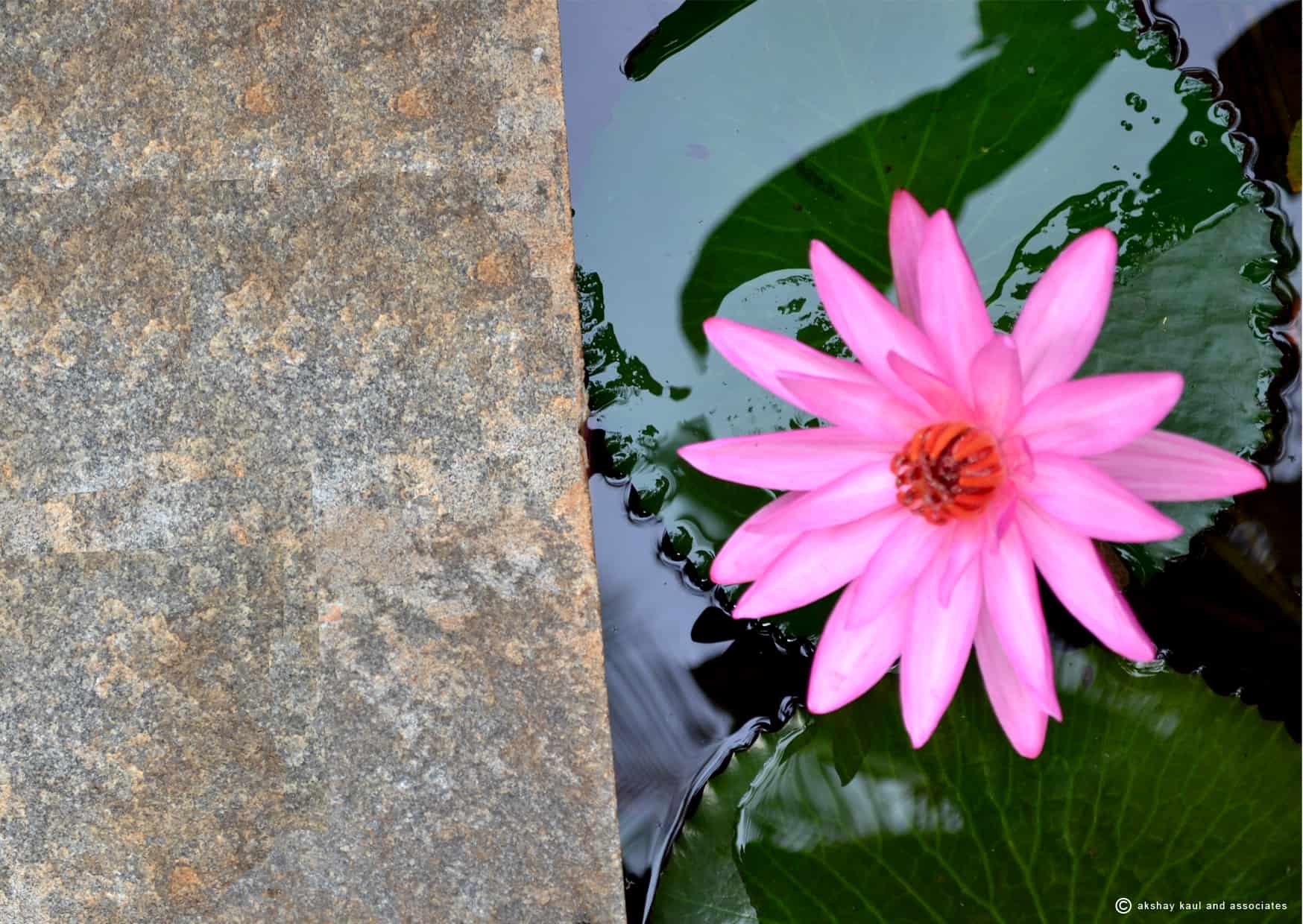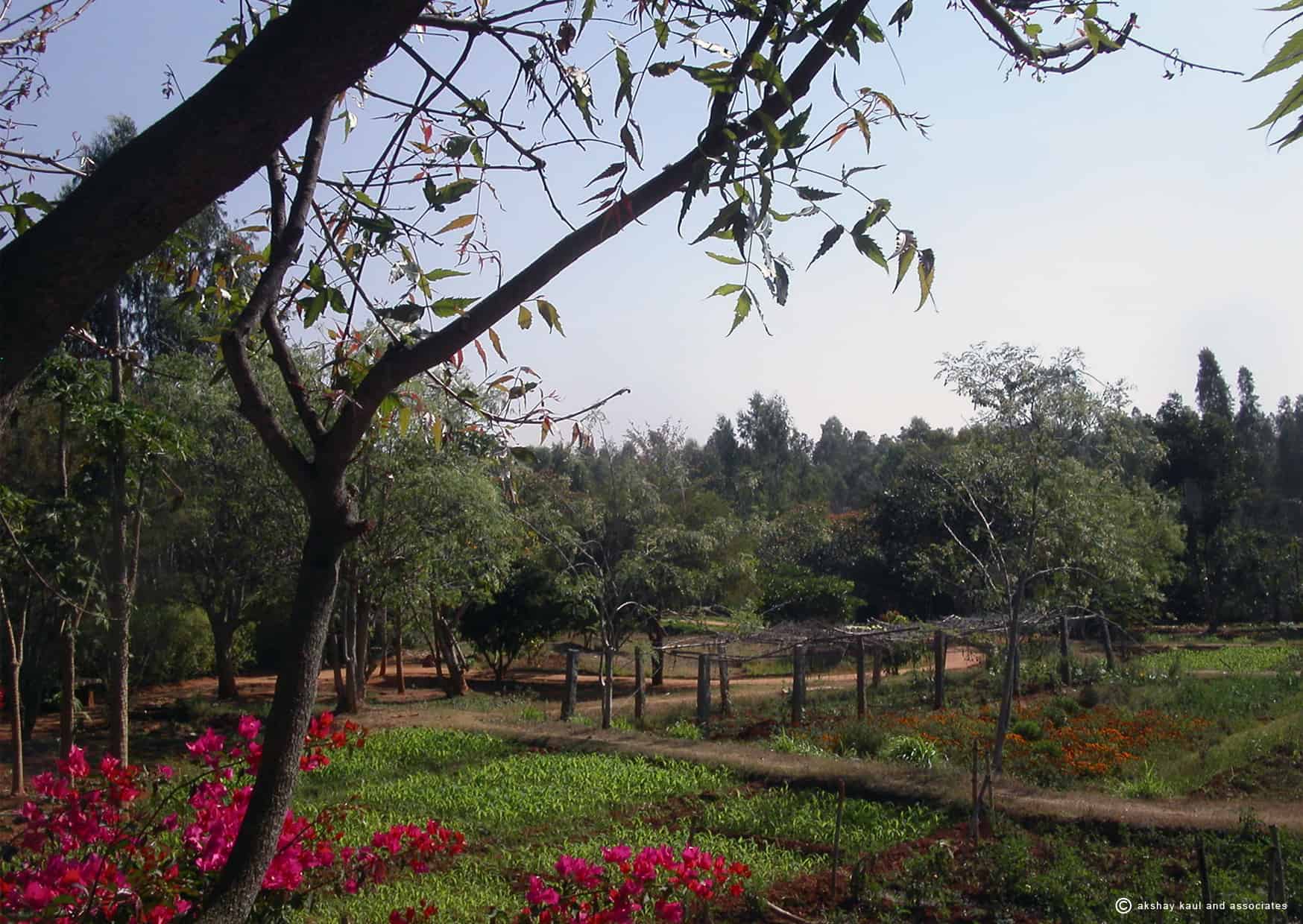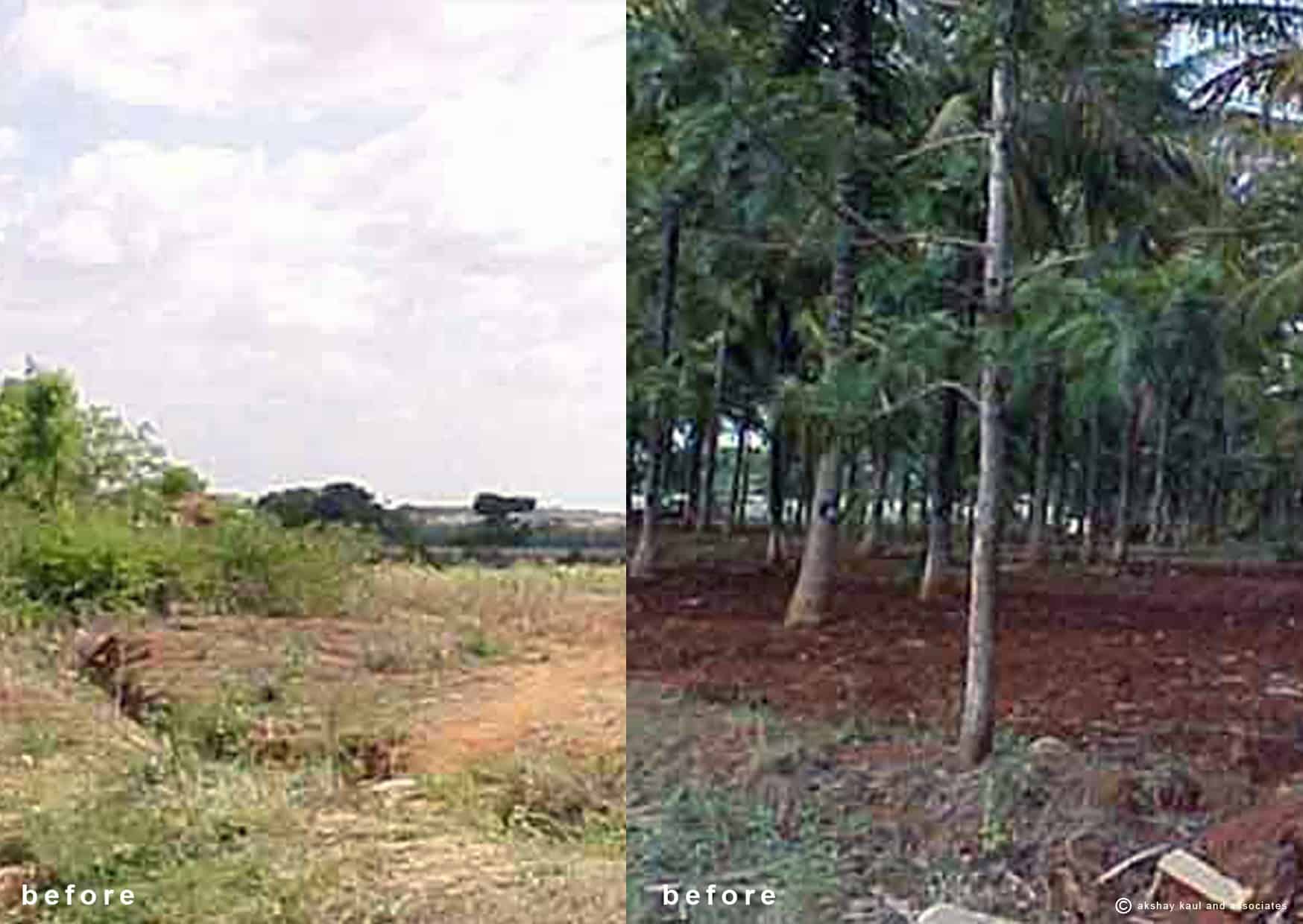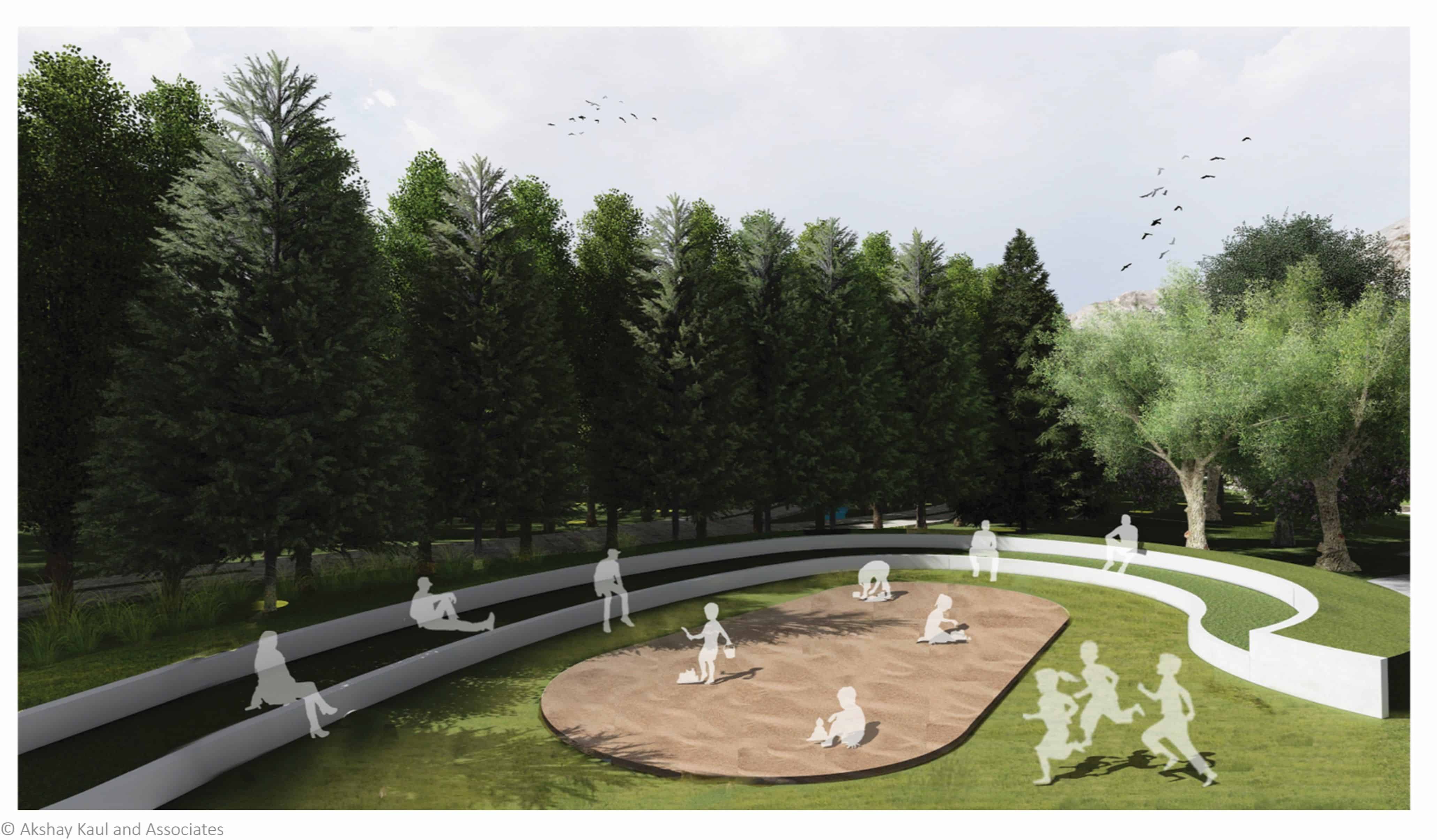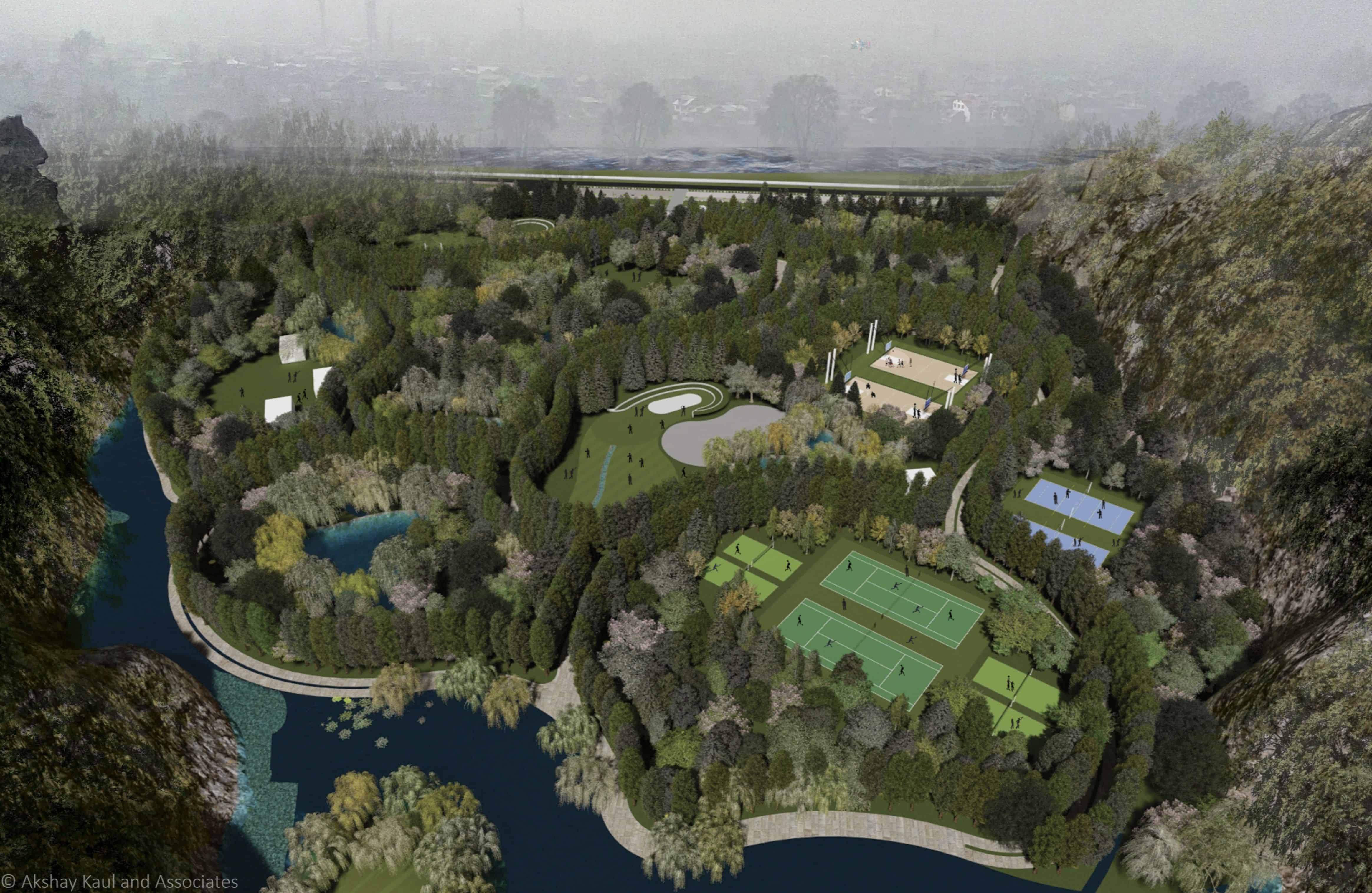Infrastructure Improvement in Taj Environs
Taj Ganj - 2007
Taj Ganj as it is known today was once the main bazaar, commercial district of Agra as historic accounts of Lahuri and Kando tell us ‘different kinds of merchandise from every land, varieties of goods from every country, all sorts of luxuries of the time and various kinds of necessities of civilization and comfortable living brought from all parts of the world’ were for sale in this market, flourishing under the imperial patronage. Kalim composed a poem on Agra devoting 26 verses to describe the abundance of drama in these lanes of the imperial bazaar, which along with the caravanserai and houses built by the merchants out side the periphery of the royal complex came to be recognized as a city in itself called Mumtazabad, city of Mumtaz.
Built for utilitarian purposes the architecture of Taj Ganj is in a stark contrast to the paradisiacal architecture of mausoleum. Treated with less detail, it can suitably reconstructed with the help of Lahauri and Kando description of the premises. Their description of the complex explains the layout to be a square divided into four quadrants, by two streets runnig north-south and east-west, of unequal width.
We were hired by the firm REPL, Delhi as consultants to do the Master Plan for re-develoment around the famous World Heritage Site Taj Mahal. The re-development proposal looked into all aspects of movement systems, the adjoining urban development, services and infrastructure, parks and gardens and public open spaces.
STREETS
The Taj ganj is complex and with pending ruling of the Supreme Court Order awaiting implementation. The focus of the project in these areas remains as ‘Surface intervention’ along the important spine Mian Nazir Street in Taj ganj and various nodes along the route, the Chowk in Taj Ganj, various Darwaza’s, exploring the possibility of organizing festivals, weekly markets, etc. The proposal looks at other arterial routes taken primarily by tourists. Along these streets leading from Agra fort to West Gate, Purani Mandi to Taj through the park to West Gate, Purani Mandi to Fatehabad road leading to Maharaja Agrasen Statue Parking lot along West of Taj through the Park to West Gate, East Gate loop road from Shilpgram, the proposal looks at solid waste management, drainage improvement, amenities, energy efficient lighting, these streetscape treatment, location and character of the open spaces, landmark buildings, visual and spatial links.















Sadika Farm House
New Delhi – 2013

This is a residential project on an one acre lot with a joint family already living on it. The client wanted us to redesign the existing landscape with issues of water accumulation in the norther part of site, grey water discharge directly and its accumulation, a landscape without any character. They wanted a landscape that they would like to use – where the father and son would walk every morning or night and discuss work and and life. The earlier landscape had existing trees many of which we did not like but as is with any project we typically do not remove any tree. So we worked with the limitation of existing structure of the earlier landscape and enhanced it . The landscape celebrates and integrates rainwater harvesting and solves all issues of drainage and recharges every drop of water that falls in the garden. Waste water is biologically treated now from the kitchen and the septic tank and reuses in the agrarian landscape. With stone crafts people to bring the stone crafts into the Indian Landscape as paving material, as screens/ jallis, and in various other ways in the landscape, area for the lawn is minimized, naturalized or native shrubs are planted, lighting form an important part of the landscape. The clients enjoy and use the landscape and the gardens more than ever before and every member of the house finds a way to partake with it. The children have put the tables against the windows and now the clients don’t want to do anything in the interiors which will “spoil the view of the gardens from inside”. In the second phase the client wanted us to do the interiors to keep the ‘sacred’ experience of landscape undisturbed.
Shreyas Retreat
Bangalore, Karnataka - 2004
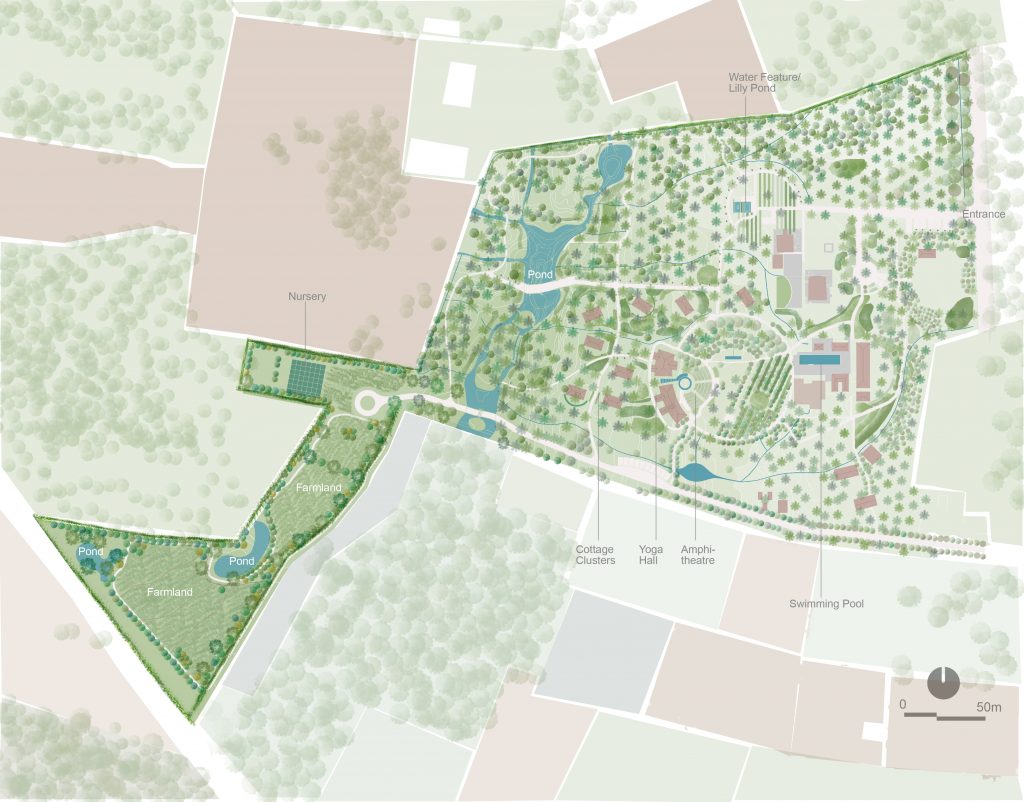
This yoga resort is spread over 22 acres in the outskirts of Bangalore city. The landscape was designed to work with natural systems and processes with water as the starting point for master planning and design. A series of detention, retention ponds along with bio-swales were created that additionally served as opportunities for outdoor activities for yoga and recreation. Pavilion and deck were created for the guests near the ponds and in the landscape. The site was a coconut plantation that was suffering from an irreversible disease. Indigenous techniques were applied to improve the soil health and a variety of native trees, shrubs and grasses were planted to enhance the biodiversity. One 25 people can stay at a time on the 22 acre landscape and 5 acres were earmarked for organic farming to supply fresh produce for the kitchen. The guest gets the opportunity to work in the edible landscape as a part of their stay.
The Serai – SUJAN
Jaisalmer, Rajasthan - 2008
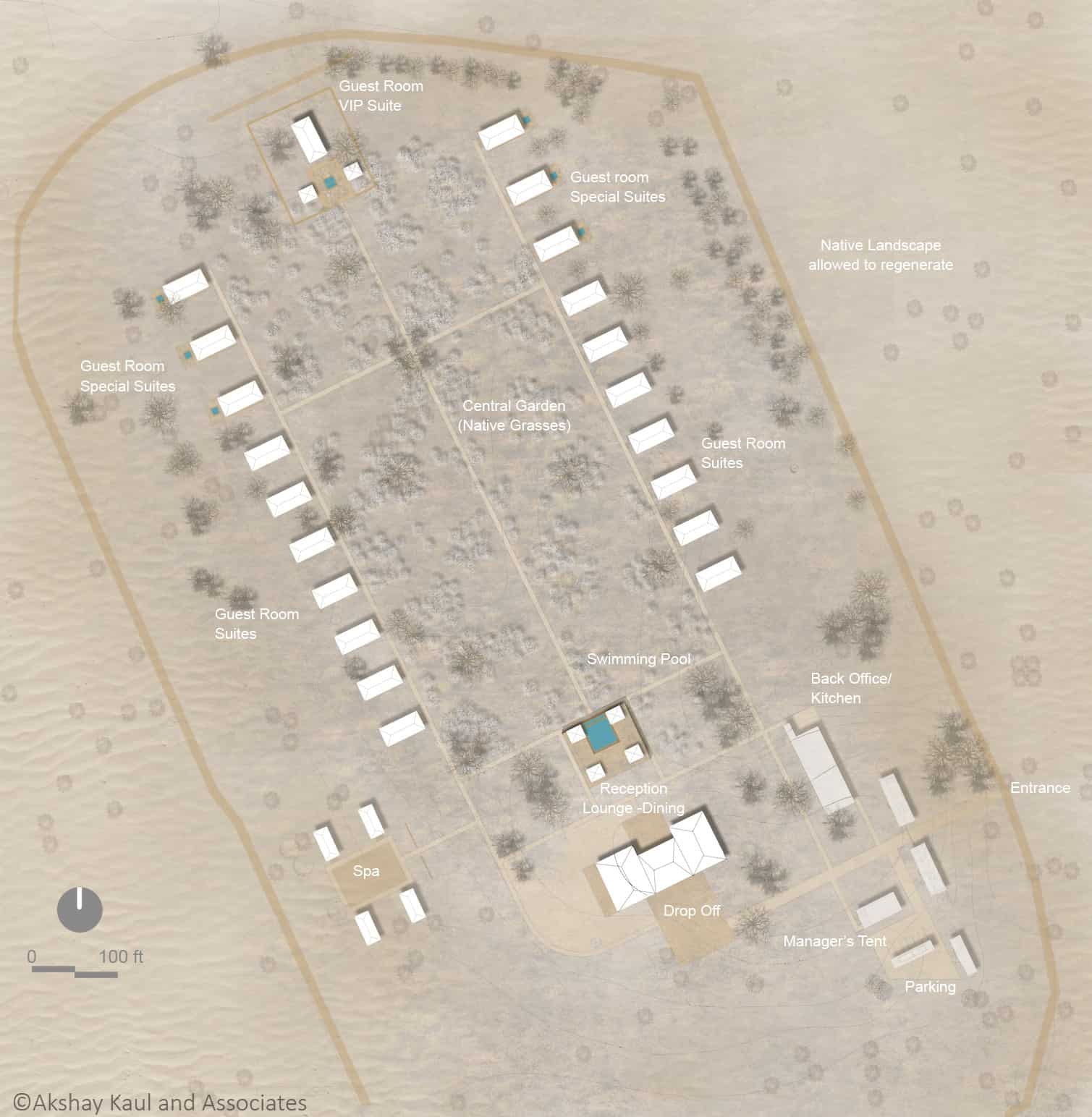
We were involved in advising the client on selecting the 25 acres from the larger 50-acre parcel for master planning, landscape and architecture design. The project is located in the shifting sand dunes area of Jaisalmer, Rajasthan in India and is spread over an area of 25 acres. It is a luxury tented safari resort with a spa, organic farm, and poultry. The layout of the 25 tents is inspired by the Serai (temporary cities of the caravans of the nobles). It is laid out in a formal axial geometry with one end as the super-luxury tent with a private pool and the other as the swimming pool and the public spaces. The elevated swimming pool provides the opportunity to see the setting sun in the infinite desert horizon. The landscape reflects the wilderness and biodiversity of the desert predominated by regional grasses, acacias and thorny vegetation. A nursery was set up on site to collect the seeds of the grasses, native plants, shrubs and trees as none of them was available in any nursery. Wastewater treatment is integrated into landscape design and is used to conserve the soil moisture through an underground indigenous technique of irrigating the plants.

Athwajan Stone Quarry Park
Jammu and Kashmir
Located in Srinagar, Jammu, and Kashmir, India, along the highway this existing quarry site was closed to make way for a park with playfields. It is located between the River Jhelum on the West and the Zabarwan Mountains on the East and North. This valley has been amidst political turmoil and almost a war like situation for the last 30 years with despair, hopelessness and high rate of unemployment and radicalization amongst the youth.
The 27-acre quarry site gets flooded annually as quarrying has lowered the ground level. The loose or fractured exposed quarried rocky surface forms the natural ground now. The site’s social and ecological context was the basis for the design. The core vision was to create a landscape that would be able to deal with annual flooding and through bio-engineering restore the quarried mountain slopes. Extensive social survey of the communities formed the basis of the program for the landscape. New and diverse sports activities were designed to engage all sections of the society and especially the youth with yoga, mountaineering, and Skate Board. Communities spaces for gathering, events, marriages have been provided and a wayside restaurant for generating revenue for operation and maintenance for the park. This wilderness and bio-diversity park would also function as an inspiration and new model for land development.

The ROW along the Highway has been proposed to be widened and parking is integrated with bio-swales and detention ponds that would take care of the runoff from the highway and the parking lot. The arrival court would give a stunning and filtered view of the mountain to the East. The circulation in the park is guided by the poplar trees that once formed avenues along important highways in the valley and would rekindle the association. Soil from the dredging of the lakes and River Jhelum is proposed to be re-used to establish the meadow and grass landscape. Meadows replace the traditional lawns that would now bloom in the spring and extend till the summers. The retention and detention ponds and bio-swales are lined with willow trees which has a traditional association of the natural streams in the valley. Native deciduous tree species are proposed as part of the urban wilderness to create tranquil spaces for yoga, meditation, healing, and contemplation. Fragrant perennial shrubs are proposed to attract bees, butterflies, and birds.
Client- Government of Jammu & Kashmir


